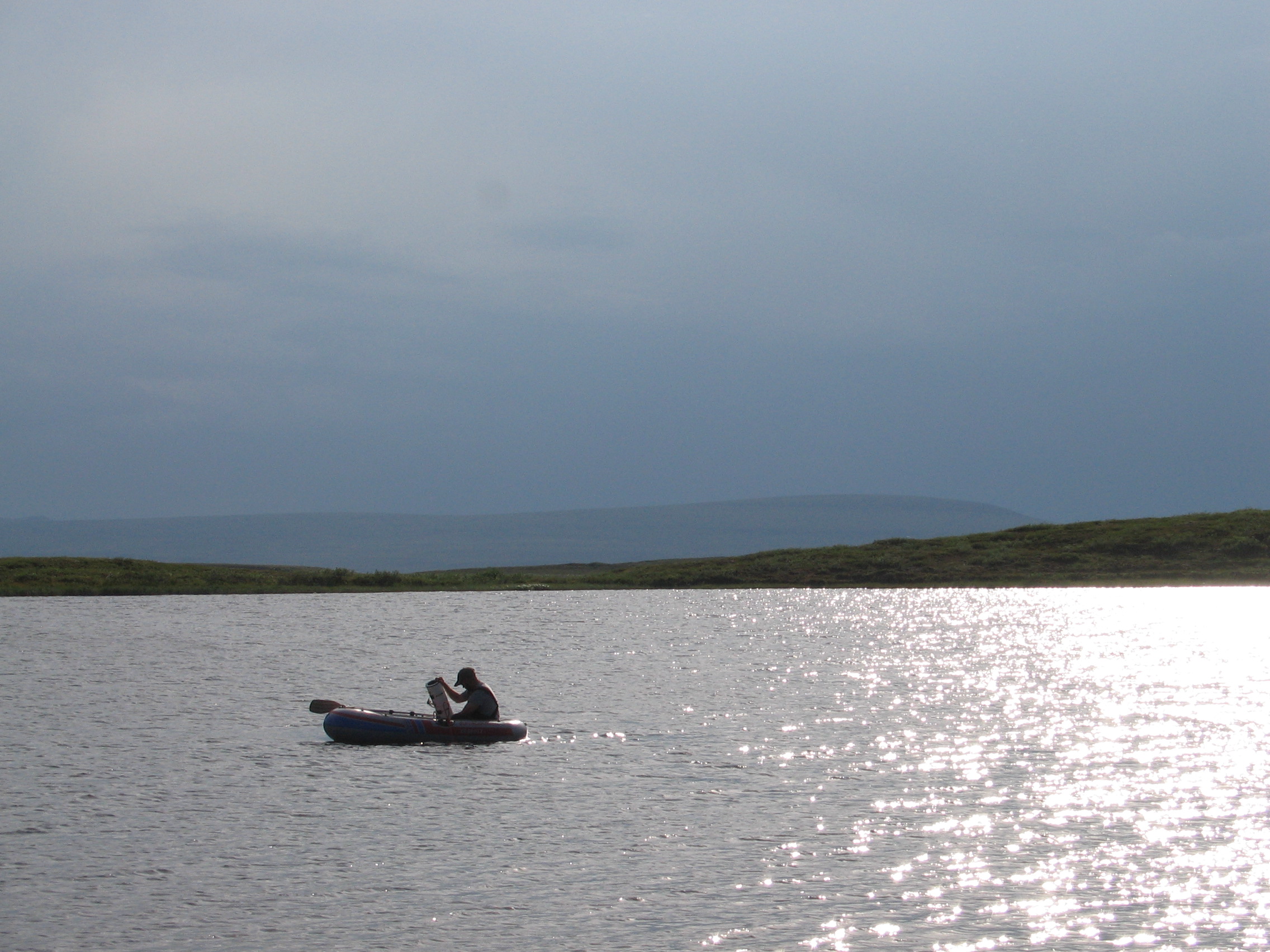Current Projects
Carbon Cycling in small human-constructed ponds
Small human-constructed ponds are a dominant landscape feature in many parts of the world and often create dramatic changes in the physical and chemical characteristics of the watershed. Many small ponds are constructed in watersheds that were formerly drained only by headwater streams.
Terrestrial organic matter subsidies (mainly leaf litter) are well established as an important component of the energy and nutrient supply of small streams but very little is known about how leaf litter inputs effec t small pond organic matter processing and how the presence of small ponds alter organic matter processing at the watershed scale.
t small pond organic matter processing and how the presence of small ponds alter organic matter processing at the watershed scale.
My lab is currently investigating how terrestrial leaf litter is processed by small ponds and the effects this may have on how watersheds process carbon.
Past Projects
The effect of funtional diversity on ecological function in a shallow man–made pond
The number of man-made ponds is increasing but the effect of these systems on carbon cycling remains poorly described. We investigated the relationship between functional diversity and ecological functioning in a shallow quarry pond near DePauw University, Indiana.
The sediment macroinvertebrate community was dominated by chironomidae in two functional groups: predators (tanypodinae) and tube-building collectors (chironominae). To test if the functional diversity of the sediment community affected the functional properties of the sediment system we conducted laboratory mesocosm studies on sediment organic matter processing (measured as sediment oxygen demand; SOD), water column chlorophyll concentration, and water column ba cterial abundance.
cterial abundance.
We found that the presence of the collector functional group significantly elevated SOD, regardless of the presence of the predator. However the presence of the predator reduced the water column chlorophyll concentration and elevated bacterial abundance.
These results suggest that the functional properties of shallow lake sediments is affected by the functional diversity of the macroivertebrate community, and that changes to macroinvertebrate diversity can have implications for how small ponds affect the carbon cycle.
Interactions between transparency and sediment oxygen demand in arctic lakes
The stratification depth of lakes is strongly affected by the transparency of the water. Our research on lakes in the Alaskan Arctic supports this previous finding. Using surveys of more than 30 lakes over 3 years we found that clear lakes have deeper epilimnia than stained lakes. Furthermore, we found that sediment oxygen demand (SOD) in these same lakes was proportional to the temperature and oxygen concentration of the water above the sediments.
These findings indicate a connection between SOD and lake transparency, since the distribution of temperature and oxyg en in stratified lakes is mainly controlled by the stratification depth. The epilimnetic waters are relatively warm and oxygenated and should support high SOD, while the hypolimnetic waters are relatively cold and hypoxic and should support relatively lower SOD.
en in stratified lakes is mainly controlled by the stratification depth. The epilimnetic waters are relatively warm and oxygenated and should support high SOD, while the hypolimnetic waters are relatively cold and hypoxic and should support relatively lower SOD.
Given that SOD is a measure of the rate of organic matter breakdown within the lake sediments, these results indicate that changes in lake temperature and transparency could affect sediment organic matter storage in these lakes. To evaluate this we modeled the effect of epilimnetic warming alone and epilimnetic warming combined with a reduction in lake transparency that is predicted to accompany climate change in the Arctic. Our results show that warming alone increased SOD and thus reduced organic matter storage in the lakes but that warming combined with a reduction in transparency reduced SOD due to the reduction in stratification depth and the concomitant reduction in the area of epilimnetic sediments.
